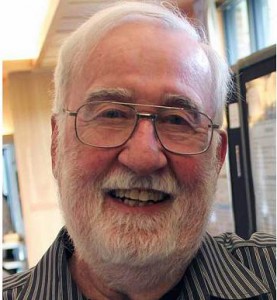A tribute to the father of a new way of doing science

David Sackett, who left us at the age of 80 on 28 May, was first and foremost a 'medical' in the fullest sense of the word and will forever be remembered by the scientific world for the revolution he led: the evidence-based medicine.
Born in the United States, David Sackett spent much of his life between Canada and England, where he was the initiator of a radical shift in the way diagnosis and therapy were conceived.
Until then, the medical class had had subjective judgement, tradition and constituted authority as essential references.
The new approach, proposed by Sackett and another pioneer of clinical epidemiology, Alvan Feinstein of Yale University, is based instead on a rigorous verification of 'clinical evidence', i.e. the symptoms and signs manifested by patients, the results of clinical examinations and the data from trials published in the literature.
The patient is thus placed 'at the centre' of the new 'Evidence-based medicine', a term coined in 1990 by Gordon Guyatt, a Canadian colleague of Dr. Sackett.
For this revolution to be accepted by the scientific community, it was necessary to build a consensus on the assumption that clinical trials are the main source of clinical proof of a therapy's efficacy. For this reason, in the 1970s and 1980s, at McMaster University in Hamilton, Ontario, Dr. Sackett and his research group dedicated themselves to examining and improving the methodology, design, protocols for conducting, analysing and reporting on clinical trials.
A number of medical therapies for very common diseases, such as the use of aspirin to prevent the risk of heart attacks and strokes, carotid artery surgery in the prevention of ischaemic events, and many others, have been subjected to experimental testing.
In the 1990s, the techniques of meta-analysis, which use statistical methods to analyse and integrate the results of different studies, already allowed a rigorous comparison of clinical trial data. However, given the enormous amount of data available on diseases and treatments, this systematic comparison only really became possible with the foundation of the Cochrane centreby Iain Chalmers and his colleagues at Oxford. It was at Oxford that David Sackett moved in 1994, starting a close collaboration with Cochrane and establishing the Centre for Evidence-Based Medicine.
To popularise the new approach among colleagues, Dr. Sackett has also engaged in intensive publication and teaching activities, especially aimed at the younger generation.
After an initial phase of mistrust and sufficiency, the new ideas have finally triumphed!
An episode from David Sackett's life fully illustrates the philosophy that inspired him: at the age of 49, i.e. some 20 years after his specialisation, he felt that his medical skills were becoming 'rusty' and decided to do a new period of clinical residency, which he liked to call 'retreading operation' (“regenerative treatment').
Like all the greatest doctors and scientists, therefore, the most important lesson he leaves us with is that we must never stop on the path to knowledge.
Dr. Carmelo Chines
Direttore responsabile
